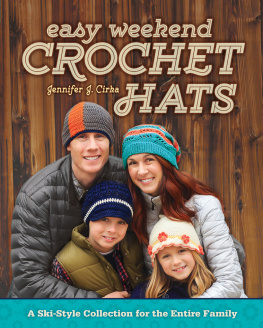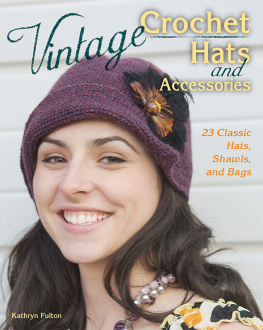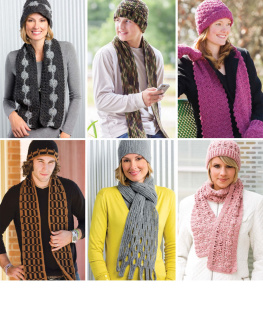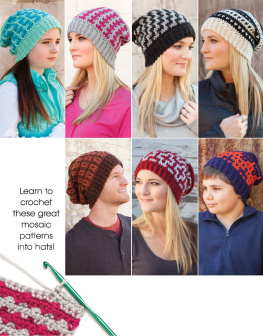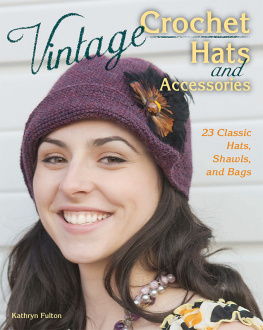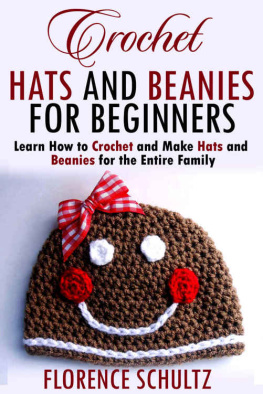Contents
Guide
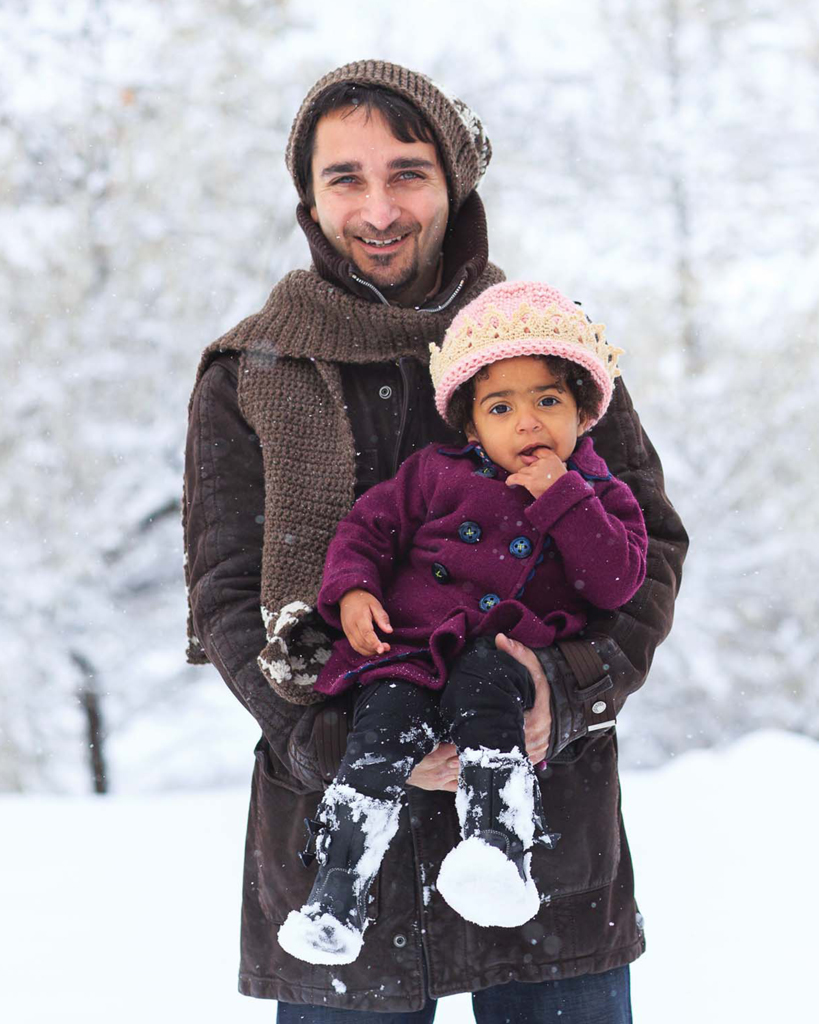
easy weekend
CROCHET
HATS
A SKI-STYLE COLLECTION
FOR THE ENTIRE FAMILY
Jennifer J. Cirka

CINCINNATI, OHIO

contents
CHAPTER ONE
girls hats
CHAPTER TWO
boys hats
CHAPTER THREE
womens hats
CHAPTER FOUR
mens hats
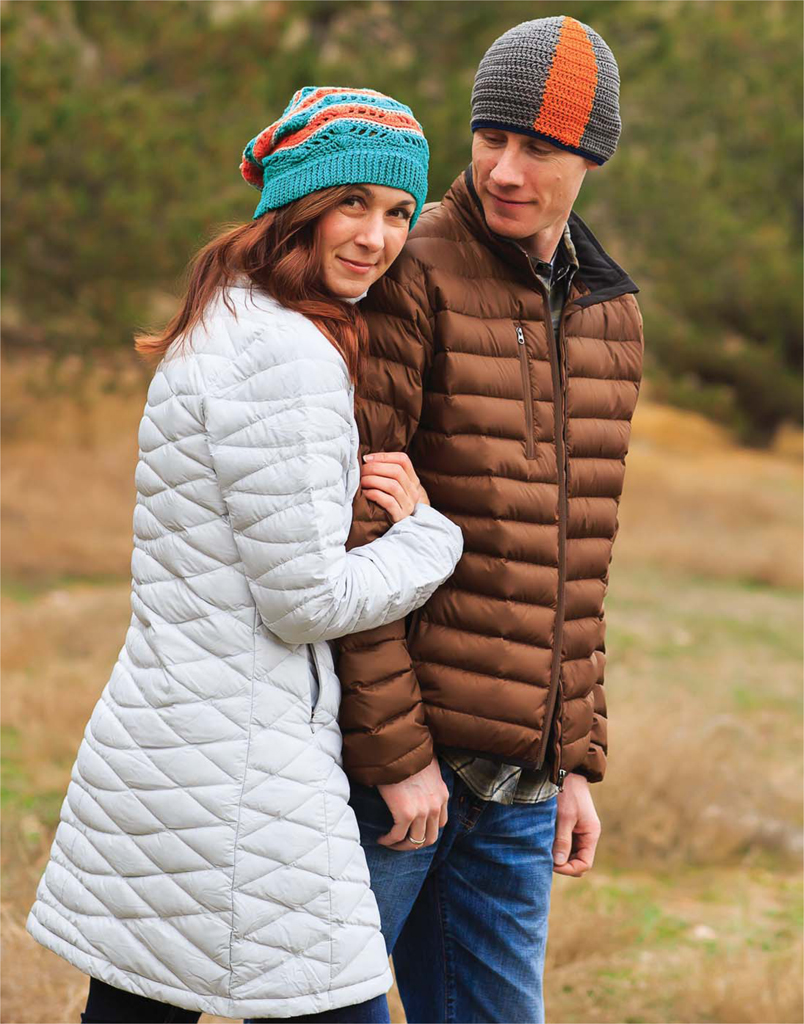
introduction
When I moved to Colorado from Western Pennsylvania back in December of 1996, I simply wasnt prepared for the amount of time I would spend outdoors. In Colorado, as long as the sun is shining (which it is 70 percent of the time in Western Colorado), people are outdoors. No longer could I hibernate in my house from October to May. Suddenly I found myself mountain biking, hiking, rafting and camping in the summer; skiing, snowboarding, snowshoeing and sledding in the winter. As an avid crocheter, I jumped at the chance to create hats for all of these activities.
The hats in this book are designed to keep you and your family warm and stylish, whether you need to cover your helmet hair after an amazing mountain bike adventure, keep the sun off your head while hiking, look hip while shredding down the snowy mountains or simply shop around a fabulous ski town while sipping hot cocoa. Wherever you enjoy the outdoors, enjoy it in one of these hats!

getting started
Before you jump into these projects, there are a few things you should know: how to pick the right crochet hook, which yarns are best suited for hats, what size is right for you, how to make a pom-pom, etc. Never fearIve covered all that and more in the following pages.
tools
Imagine that you are a mechanic: youre not going to take off a lug nut with a hammer, are you? Or, what if that inexpensive ratchet breaks just as you are about to get that pesky socket loose enough to remove. Frustrating, isnt it? Whether you are working on a car or crocheting a beautiful hat, you need to choose your tools wisely. Good tools make the job more pleasurable. You want your tools to be comfortable to work with and a good fit for you and your project. Choose wisely, and of course, using visually pleasing tools doesnt hurt either.

PARTS OF A CROCHET HOOK
TIPS AND TRICKS
When crocheting, try to keep the yarn loop on the shaft of the hook. This will ensure that your stitches are the correct size and keep your stitches uniform.
HOOKS
Crochet hooks come in many different varieties, but they often have the same things in common. The average crochet hook is made up of five to six basic parts: the head or tip, the throat, the shaft, the handle, and some may or may not have a thumb rest or grip.
Most yarn hooks have one of two different head shapes: round or in-line (which is sometimes called flat). A common name brand for round head hooks is Boye and a common name brand for in-line hooks is Susan Bates. Both of these brands can be found at your local craft and hobby store. The throat of the hook is made narrower than the rest of its body to help you work your yarn through the stitches.
Next on your hook is the shaft, probably the most important part. Most of your crocheting is done on the shaft, so its size is very important. The width of the shaft determines the hook size: the larger the size, the thicker the yarn you can use. The size is usually stamped onto the hook so that you dont have to figure it out yourself. There are three parts when you look at the stamp on a hook. First, a letter of the alphabet: these start at the letter B and go up. The further up the alphabet, the bigger the size of the hook. The largest hook I have ever seen in person is a Q. After the letter is a corresponding number. Finally, the width of the shaft is written in millimeters. These indicators will help you identify your hook size.
Your crochet hook also has a handle, and here you have many choices. The average hook will have a straight handle that may or may not have a thumb rest indent on it. These handles are usually about four inches (10.2cm) long. But lately, since people have been known to crochet into the later years in life, ergonomic handles have been making an appearance on shelves. These handles fit into your hands better and are easier to grip. They relieve some of the stress put onto your hands and wrists while crocheting. Now, if you like to be surrounded by pretty things, you can also find hooks covered in polymer clay. These are usually artistic in nature and can be found on websites like eBay and Etsy. You can even find online tutorials to make them yourself.
Crochet hooks can be made from many different materials. I am always searching the secondhand stores looking for old hooks made from ivory or some other unique materials. Most of the hooks you will find at your local craft and hobby store are made from aluminum or plastic. Larger hooks are always plastic to help keep the weight of the hook lighter. Higher end local yarn stores will usually also carry some wonderful bamboo hooks. If you search the Internet, you will also find some amazing and beautiful hardwood hooks crafted by hand. These are my favorites, but you must remember that they are handmade and may not be the exact size needed. Because of this, I dont design with them. I do love to use mine for personal and charity items though. Last on our list of materials are steel crochet hooks. These are those small, and sometimes scary, ones you see. They are used when working with fine thread and making intricate designs. These hooks also use a different numbering and lettering system than regular yarn hooks.

THE OTHER STUFF
You could easily go broke purchasing all the fun little accessories that go along with crocheting. But in truth, you only need a few things. All of these can be found at hobby and craft stores as well as local yarn stores. First, lets consider the necessities.
Scissors are pretty self-explanatory. I like to use a small pair of embroidery scissors because they fit into my crochet hook case. It is also nice to have a pair that folds up or has a cover to keep from possibly hurting someone. Ive even seen some really neat ones that hang like a pendant on a necklace chain. The choice is yours.
A yarn needle or two (also known as a tapestry needle) is also a necessity. These large needles are usually pretty blunt and have a large eye that makes them easier to thread. I introduced my mother-in-law to a fabulous implement called a needle threader. She loves how much easier and faster it allows her to thread her needles.
You will also need something to measure with. I always carry a small six-inch (15.2cm)

